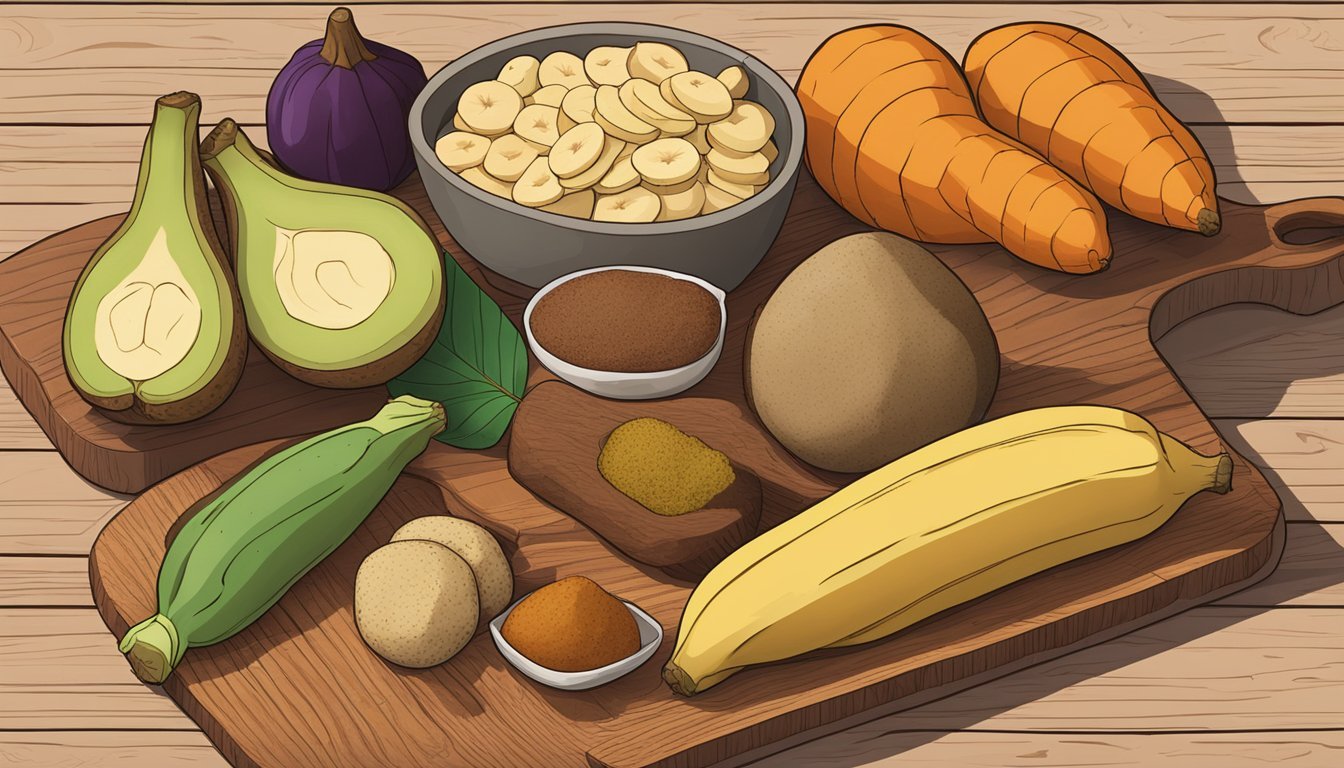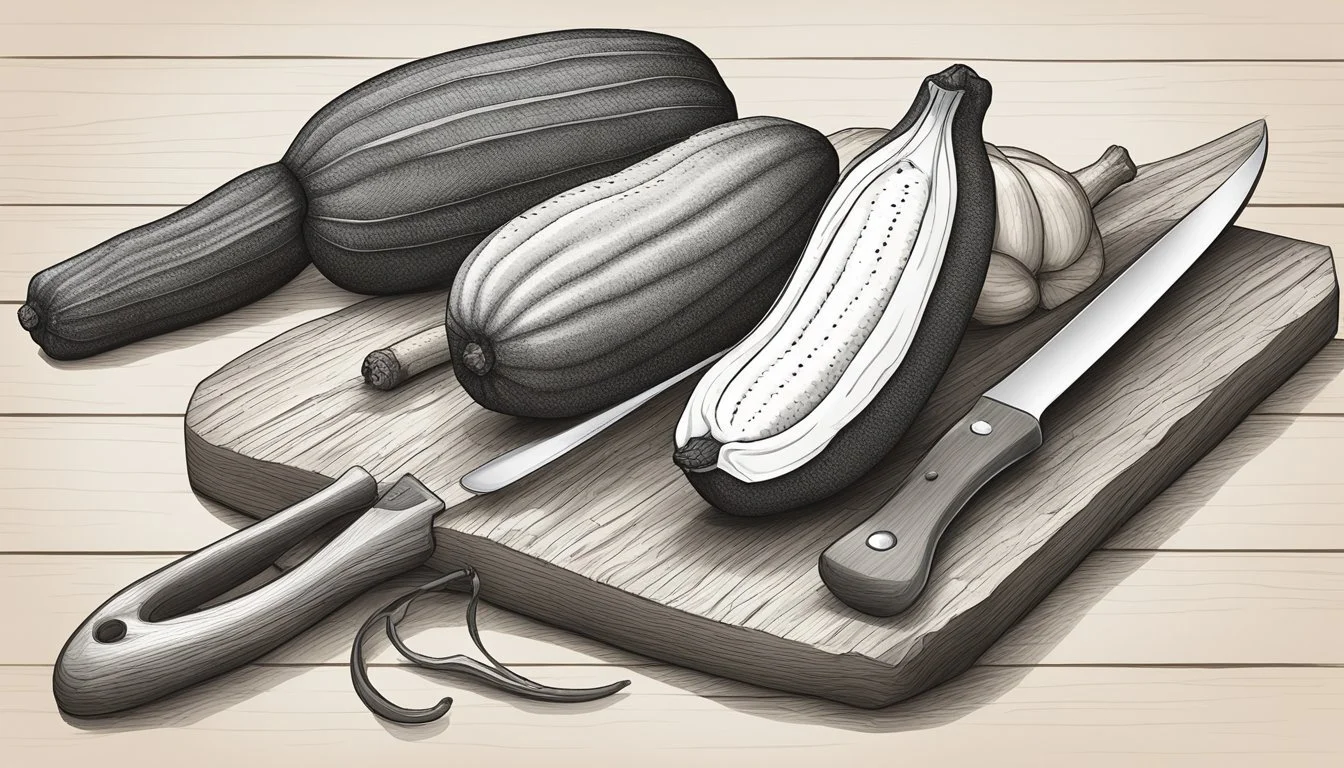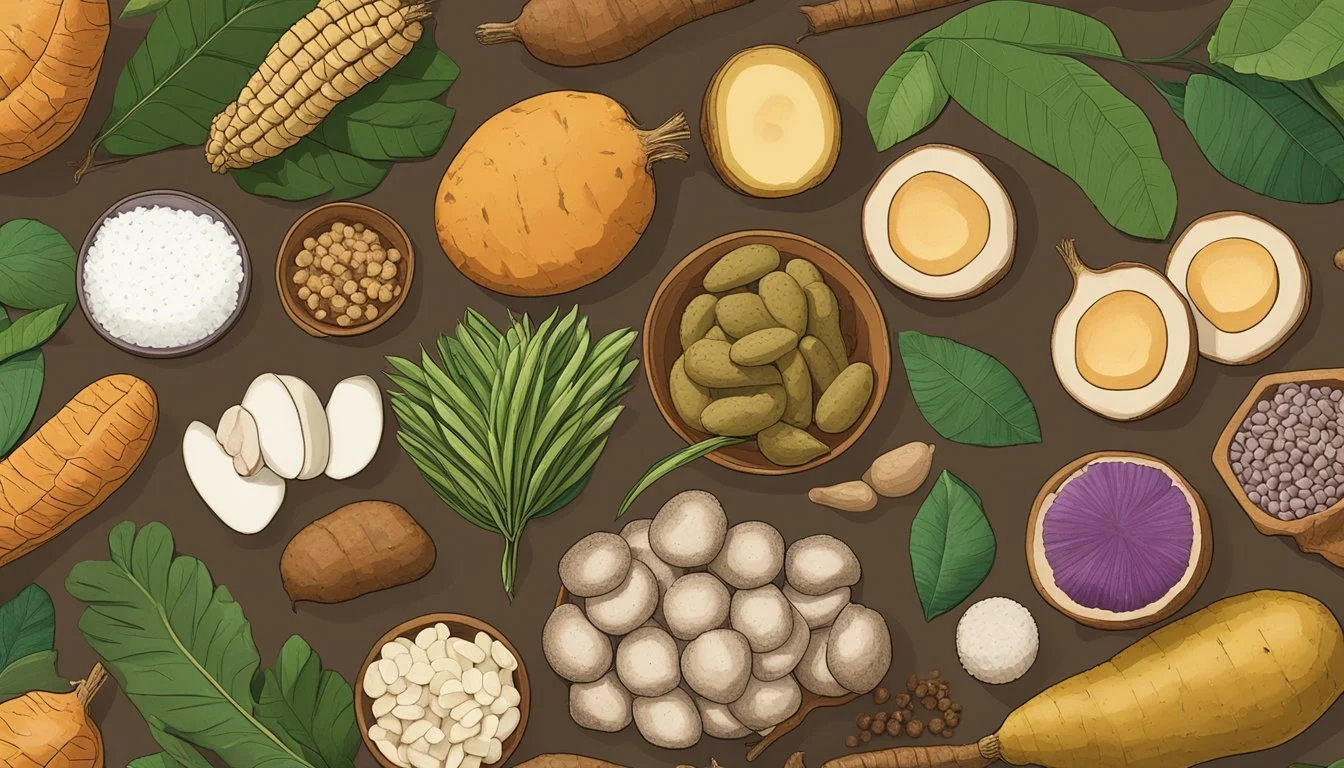Plantain Substitutes
Top Alternatives for Your Cooking Needs
Plantains are a versatile and staple ingredient in many tropical regions of the world, often used in cooking for their starchy texture and subtle sweetness that intensifies as they ripen. However, they may not always be readily available, or suitable for every dietary need, necessitating a look at various substitutes that can mimic the unique characteristics of plantains. While there is no perfect one-to-one substitute due to the distinct flavor and texture of plantains, a number of alternatives can be used in recipes to achieve a similar result.
When looking for a substitute for plantains in savory dishes, culinary experts suggest options such as unripe bananas, which share a similar texture but are more readily available in most supermarkets. For those seeking to replicate a plantain's firmer texture in cooked dishes, yuca root, potatoes, yams, and taro provide a starchy consistency that can withstand the rigors of frying or boiling. Each of these substitutes brings its own unique taste and nutritional profile to a dish.
In terms of sweetness and softer texture for dishes that traditionally rely on ripe plantains, sweet potatoes (What wine goes well with sweet potatoes?) can serve as an alternative, especially in baking or dessert recipes where a subtle sweetness is desired. Adjustments in cooking time or technique may be required when substituting for plantains to ensure the alternative ingredient mimics the desired characteristics of the original recipe, be it for texture, flavor, or both.
Understanding Plantains
Plantains are a staple food in many tropical regions of the world, known for their starchy quality and versatility in cooking. This section provides an in-depth look at the characteristics, nutritional benefits, different stages of ripeness, and culinary uses of plantains.
Characteristics of Plantains
Plantains resemble bananas but are larger, starchier, and less sweet when unripe. Their skin is thicker, and the flesh firmer, which makes them ideal for cooking rather than raw consumption. Unlike bananas, plantains are almost always cooked before being eaten.
Nutritional Profile
Plantains are a rich source of carbohydrates, essential for energy, and dietary fiber, which aids digestion. They also provide valuable minerals such as potassium, with a medium plantain containing about 400 mg of this heart-healthy mineral. In terms of health, plantains offer a nutritious alternative to many other starchy foods.
Nutrient Content in a Medium Plantain Carbohydrates Approx. 47 grams Dietary Fiber Approx. 4 grams Potassium Approx. 400 mg Sugar (when ripe) Approx. 22 grams
Different Stages of Ripeness
Plantains undergo significant changes as they ripen. Green plantains are very starchy and not sweet, analogous to potatoes, and suitable for savory dishes. As they mature, the starch converts to sugar, and ripe plantains become sweeter and softer, suitable for desserts or sweet preparations.
Plantain Versatility in Cooking
Plantains are highly versatile and can be prepared in various ways, from boiling and frying to baking and grilling. Green plantains are particularly favorable for frying to make chips or for thickening stews. When plantains ripen and become soft and sweet, they lend themselves well to sweet dishes or can be caramelized as a dessert or sweet side dish.
Common Plantain Substitutes
When cooking, various fruits and vegetables can be used in place of plantains, depending on whether the dish is sweet or savory. These substitutes offer a similar texture or flavor profile and can be found in many kitchens or local markets.
Using Bananas as a Substitute
Unripe bananas can be used in place of plantains in both sweet and savory dishes due to their similar texture and taste. The firmer texture of green bananas makes them suitable for cooking, mimicking that of plantains.
Potatoes and Their Varieties
Regular potatoes with a floury texture can act as a plantain substitute in savory meals, offering a similar starchy component to dishes. Varieties like Russet or Yukon Gold are preferred for their ability to hold their shape and texture after cooking.
Sweet Potatoes and Yams
Sweet potatoes and yams are excellent alternatives to plantains, particularly in sweet recipes. They provide a soft, sweet flesh that can be mashed, fried, or baked, adapting well to plantain-based recipes.
Plantain Flour Alternatives
Cassava, also known as yuca root, can be ground into flour to replace plantain flour. It is commonly utilized in tropical regions for its similarity in taste and versatility.
Other Starchy Fruits and Vegetables
Breadfruit and jackfruit are suitable substitutes for plantains with their meaty texture. These can be used in savory applications, with breadfruit also being similar in sweetness when ripe.
Substitution in Meals
Incorporating substitutes for plantains in various dishes allows diners to enjoy similar textures and flavors while expanding their culinary options. Whether for breakfast, main courses, snacks (What wine goes well with snacks?), or desserts, alternatives such as green bananas, yams, and jackfruit can be adapted to fit traditional plantain recipes.
Breakfast Dishes
For a vibrant start to the day, unripe bananas serve as an excellent substitute in recipes that normally feature plantains. They are particularly suitable for creating dishes like mangú, a dish where plantains are boiled and mashed. Due to their starchy and bland nature, green bananas can match the consistency and taste of unripe plantains, making them ideal for savory breakfast plates.
Main Courses and Side Dishes
When preparing main courses or side dishes, alternatives to plantains like yuca roots or potatoes can maintain the desired starchy consistency. In dishes like patacones or tostones, which typically use green plantains, these substitutes can easily mimic the texture needed for frying. Sweet potatoes, though slightly sweeter, can replace ripe plantains in side dishes to accompany proteins.
Savory Dishes:
Yuca Roots: They offer a similar firmness and absorb flavors well.
Potatoes: A versatile substitute that works well for dishes like plantain chip and plantain nachos.
Side Dishes:
Sweet Potatoes: A good option for replacing sweeter, ripe plantains.
Snacks and Appetizers
Green bananas are again a top choice for recreating snacks like plantain chips. Their firm texture ensures they crisp up well, making them a smart pick for crunchy treats. Additionally, breadfruit and jackfruit can stand in for plantains in savory appetizers, offering a unique taste while keeping the snack's integrity.
Snacks:
Green Bananas: Can be sliced and fried to replace plantain chips.
Jackfruit: Works well in more creative snack recipes requiring a meaty texture.
Desserts and Sweet Treats
For desserts where ripe plantains are usually caramelized to bring out their sweetness, ripe bananas can fill this role without significant changes to the taste profile. They can be used in sweet plantain recipes like maduros, allowing cooks to achieve a similar softness and caramelization when baked or fried.
Desserts:
Ripe Bananas: Ideal for dishes requiring a natural sweetness, like baked plantains.
Cooking Techniques for Substitutes
When substituting for plantains, one can apply various cooking methods to achieve a texture and flavor similar to the original plantain dish.
Baking and Roasting
Baking or roasting are ideal for sweet potatoes and yams, which can serve as substitutes for plantains. Preheat the oven to the desired temperature, usually between 375°F to 425°F. Peel the substitute, slice it to mimic plantain's thickness, and coat lightly with oil before placing on a baking sheet. These methods can enhance the sweetness inherent in the substitutes, giving a caramelized or crisp edge similar to baked or roasted ripe plantains.
Boiling and Mashing
Boiling is a simple technique for substitutes like yuca roots and unripe bananas. These ingredients should be peeled using a knife and cut into chunks. Place them in a pot of salted water, bring to a boil, and then simmer until they are fork-tender. Once boiled, these substitutes can be mashed to replicate the soft, mashable texture of boiled plantains, suitable for dishes like "mangu" or as a side dish.
Frying and Sauteing
When one needs to mimic fried plantain dishes, unripe bananas and breadfruit can be sliced and fried. To fry them, heat a generous amount of oil in a frying pan. They should be fried until golden brown, achieving a crispy exterior that resembles the texture of fried plantains. For a sauteed counterpart, the substitutes can be sliced thin, lightly seasoned, and then cooked in minimal oil for a softer finish. Users should be attentive to the moisture content and adjust the frying time to prevent sogginess.
Cultural Considerations
When considering plantain substitutes, it's important to take into account their role in traditional dishes across different cultures. Each cuisine integrates plantains differently, with specific preparation methods and recipes that highlight their unique flavor and texture.
Plantain in Caribbean Cuisine
In Caribbean cuisine, plantains are a staple ingredient. They are featured in dishes like mofongo, where they are mashed with garlic and pork cracklings, and in tostones, where they are fried, flattened, and fried again until crisp. When substituting plantains in Caribbean dishes, one should maintain the integrity of the dish's traditional flavor and texture profiles. Unripe bananas are often the closest in terms of starchy texture, but may lack some of the depth plantains offer.
Popular Caribbean plantain dishes:
Mofongo
Tostones
Maduros (sweet plantains)
Plantain in African Cuisine
In African cuisine, particularly in West and Central Africa, plantains are prominently used in various forms from ripe to unripe. They are boiled, grilled, or made into fufu, a starchy side intended to accompany rich stews and soups. Yuca roots and yams offer a similar starchy component and can absorb flavors well, making them suitable alternatives that align with African culinary traditions.
Common uses in African cuisine:
Boiled or grilled plantains
Fufu
Plantain chips
Plantains in Latin American Dishes
Plantains are a signature ingredient within Latin American dishes, often served alongside rice, beans, and meat. They are found in empanadas, tortillas, and various sweets. In savory Latin dishes, green bananas can be a practical substitute for plantains, while for sweet dishes, a ripe banana might be preferred. Both preserve the dish's cultural essence and introduce a similar texture that's required for authenticity in Latin American cuisines.
Latin American plantain applications:
Empanadas (filled pastries)
Tortillas de plátano (plantain tortillas)
Arroz con plátano (rice with plantains)
Choosing appropriate substitutes for plantains requires an appreciation of their role in cultural culinary practices. The alternatives should strive to respect the texture and flavor influences of the original ingredient within each cultural context.
Health Benefits and Dietary Information
When considering plantains and their substitutes, it is essential to understand their nutritional profile, which includes macronutrients, vitamins, and minerals. These aspects contribute significantly to their overall health benefits.
Macronutrients and Calories
Plantains are primarily composed of carbohydrates, with a moderate amount of dietary fiber, and are low in fat and protein. One cup of boiled green plantains contains roughly 166 calories, 1.5 grams of protein, 40 grams of carbohydrates, and 0.1 grams of fat.
Vitamin and Mineral Content
Plantains are a nutritious food that provides a variety of vitamins and minerals. They are an excellent source of Vitamin C and Vitamin B6, and also offer a notable amount of potassium. Specifically, one raw yellow plantain can contain around 27% of the recommended daily value (DV) for Vitamin C and 22% for Vitamin B6. Additionally, these fruits offer other essential nutrients like magnesium and iron, albeit in smaller amounts.
Dietary Considerations
Individuals who are conscious about their diet should note that plantains are gluten-free, making them a suitable option for those with celiac disease or a gluten intolerance. They also offer fiber, which supports digestive health. However, the high carbohydrate content suggests moderation in consumption for those managing blood sugar levels. Taros, often used as a plantain substitute, have fewer calories and a lower glycemic index, offering a nutritious alternative with high fiber and potassium content.
Shopping and Storage Tips
When shopping for plantain substitutes, one should focus on the ripeness and condition of potential alternatives. Proper storage methods are essential to maintain freshness and quality.
Selecting the Best Substitutes
For green plantains, unripe bananas are an excellent alternative as they share a similar starchiness and flavor. In grocery stores, look for unripe bananas with a firm texture and green color. Sweet potatoes, yams, and taro can also substitute for plantains in savory dishes, but their sweetness and texture will differ.
Color is a good indicator of ripeness and suitability for specific recipes. Yellow plantains or bananas are slightly sweet and still firm, making them versatile for various cooking methods. Similarly, black plantains are at their peak sweetness and are best used in dessert recipes where a sweet flavor is desired.
Proper Storage Methods
Once home, proper storage techniques will prolong the shelf life and quality of both plantains and their substitutes. Ripe plantains should be stored at room temperature and used within a few days as they ripen quickly. To extend their life:
Keep them away from direct sunlight and high temperatures.
Separate them from other fruits to avoid hastening the ripening process.
For unripe bananas and other substitutes:
Store in a cool, dark place.
Wrap them individually in parchment paper to reduce ethylene exposure, which slows down the ripening process.
If refrigeration is necessary, store the substitutes in the crisper drawer of the refrigerator in a perforated plastic bag for up to a week. This prevents moisture accumulation, which can lead to spoilage.
Innovative Plantain Substitute Recipes
In this section, readers will discover unique and exciting recipes that offer alternatives to plantains, leveraging ingredients that mimic the texture and versatility of the original while providing a twist to classic and beloved dishes.
Plantain Bread and Dough-Based Foods
Unripe bananas provide an excellent base for bread and dough-based foods due to their starchiness. They can be used to craft a plantain bread substitute. Here is how one can incorporate them:
Banana Flatbread: Use mashed unripe bananas mixed with flour to create a pliable dough. This can be flattened and griddled, producing a savory and versatile flatbread.
Creative Snack Ideas
Yuca Nachos: Thinly slice yuca roots and bake until crispy. These can be an alternative for plantain fries and can be topped with cheese, salsa, and guacamole, much like traditional nachos.
Enticing Dessert Creations
Green Banana Fries: For a dessert with a difference, one might lightly coat strips of green bananas in a cinnamon-sugar mix, baking them until they caramelize slightly, serving as a novel sweet treat that replaces plantain fries.






